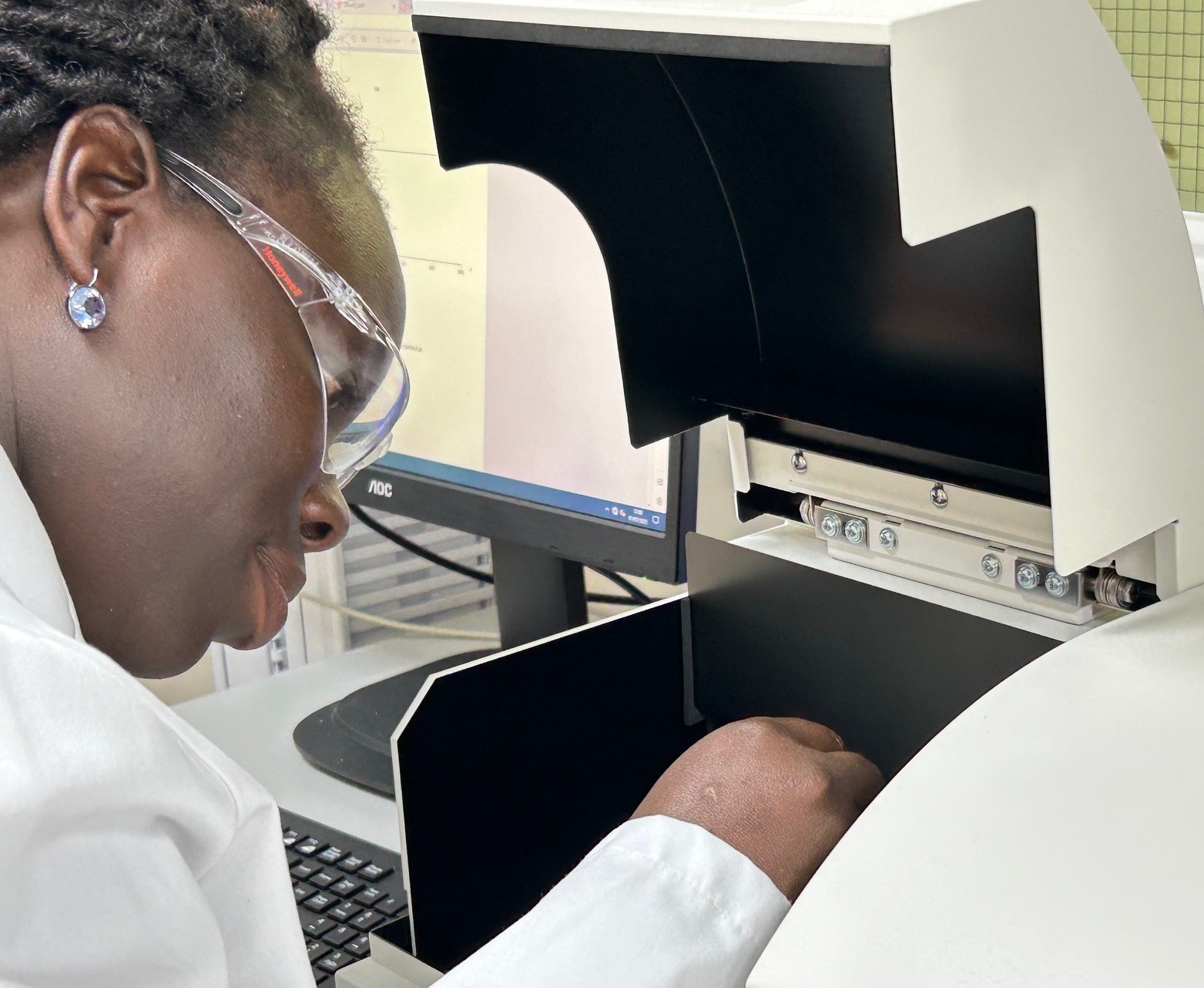Fluorescence spectroscopy testing is a sensitive analytical technique that detects and quantifies fluorescent compounds within a sample. It works by exposing the sample to light at a specific excitation wavelength and measuring the emitted light at a longer wavelength. Due to its high sensitivity and selectivity, this method is commonly employed for trace analysis.
How Fluorescence Spectroscopy Works
When certain molecules absorb light energy, they are excited to a higher electronic state. As they return to their ground state, they emit light of a lower energy (longer wavelength). The intensity of this emitted fluorescence is directly proportional to the concentration of the analyte, making it a valuable tool for quantitative analysis.

Applications of Fluorescence Spectroscopy in Pharmaceutical Testing
- Trace impurity analysis in pharmaceuticals and chemicals
- Protein and enzyme assays in biopharmaceutical testing
Advantages of Fluorescence Spectroscopy
- High Sensitivity — Detection limits down to ng/mL or lower
- Specificity — Selective detection of fluorescent species
- Non-destructive — Sample integrity often retained post-analysis
Limitations
- Restricted to naturally fluorescent compounds or those that can be derivatised
- Susceptible to quenching and matrix effects
Compliance & Standards
Our fluorescence spectroscopy methods are validated in accordance with ICH guidelines and GMP standards, ensuring reliable and regulatory-compliant results.
Frequently Asked Questions
Fluorescence spectroscopy is inherently selective for compounds that naturally fluoresce. However, non-fluorescent compounds can often be made detectable through derivatisation with fluorescent reagents, allowing indirect analysis using this technique.
Fluorescence spectroscopy can be applied to various sample types, including solutions, biological samples, and solid materials (using front-face or solid-state attachments). The key requirement is that the analyte or derivative exhibit fluorescent properties under the selected conditions.
While both techniques involve light interaction with molecules, fluorescence spectroscopy typically offers far greater sensitivity — often detecting analytes at much lower concentrations than UV-Vis absorbance methods. However, UV-Vis is more broadly applicable to a wider range of compounds without derivatisation.
Advantages of Fluorescence Spectroscopy include
High Sensitivity
The instrument can analyse and detect samples at extremely low concentrations (up to 10-12 mol/L)
Background-Free/ High Selectivity
Small concentrations of analyte can be detected even in presence of other materials in the sample, due to the unique nature of the test.
Fast and easy to use
Once ready, the analysis happens in minutes
Non-destructive
If the sample is used as is, it remains intact after analysis, making it important when working with valuable or irreplaceable samples.
Real Time Monitoring:
The measurement happens in real time and continuous monitoring can be performed, allowing the study of dynamic processes.
Disadvantages of Fluorescence Spectroscopy include
Environmental sensitivity:
Fluorescence is highly susceptible to changes in temperature, pH, and solvent conditions, which can alter the fluorescence properties of the sample.
Limited Penetration Depth:
Fluorescence-based techniques generally have limited penetration depth compared to other methods like infrared spectroscopy, which can be a drawback when analysing thick samples.
Limited Applicability:
Not all molecules fluoresce, so the technique is not universally applicable
Short Lifespan of the fluorophore:
In most case the sample is sensitive, therefore there will be a loss of signal over time
Autofluorescence:
If other molecules in the sample can absorb the light at the same wavelength, there will be interference.
